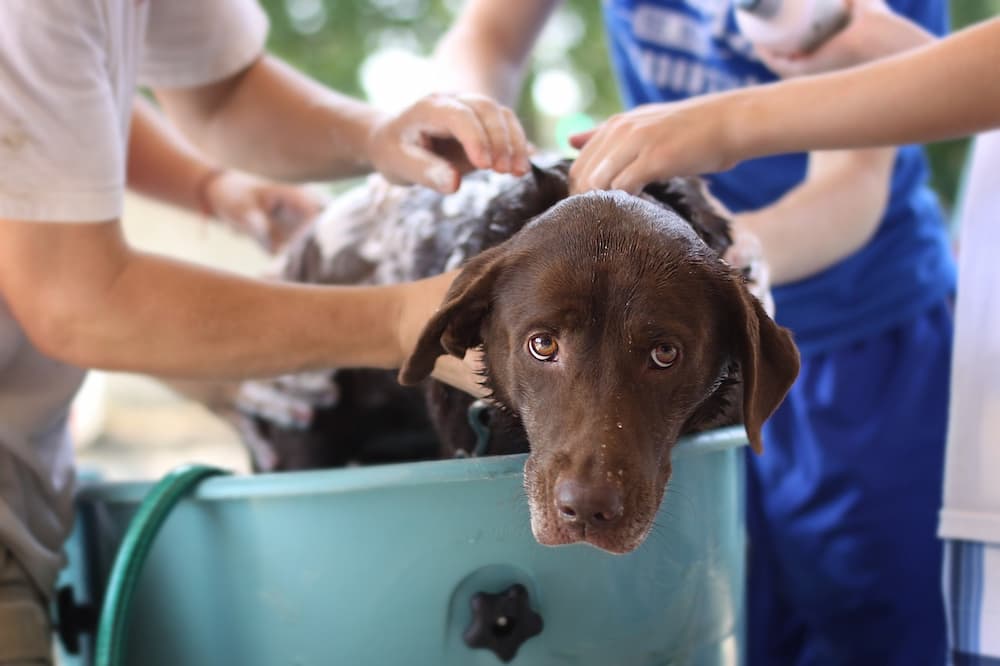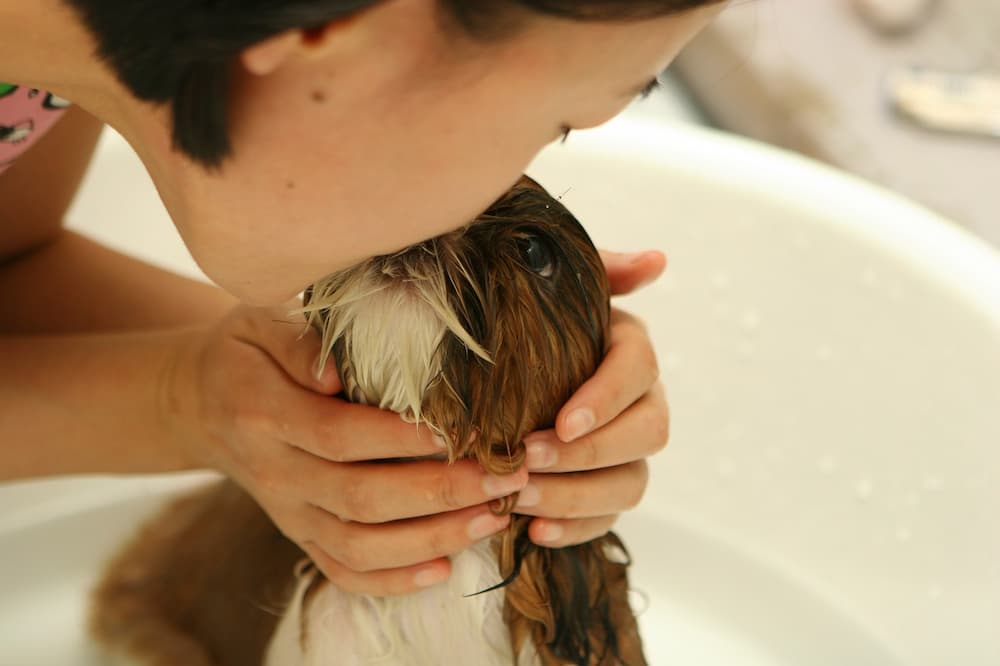It depends on factors such as the breed, coat type, and how active they are. Bathing every 2-3 months is sufficient unless they get extremely dirty or experience skin problems. Overbathing can strip their coat of natural oils, leading to dry skin and potential skin issues. For dogs that love swimming or rolling in mud, a simple water rinse and towel drying might be enough.
While maintaining proper hygiene is essential, it’s equally important to strike the right balance. So, how often should you bathe your dog in the summer? Let’s dive into this refreshing topic and uncover the secrets to keeping your four-legged friend both clean and comfortable during the dog days of summer.

Why are dog baths good in the Summer?
Summertime brings with it a multitude of factors that can affect our pets’ cleanliness. The higher temperatures, increased outdoor activities, and exposure to various elements can all contribute to your dog’s need for a refreshing bath.
Bathing not only helps remove dirt, dust, and allergens from your dog’s coat but also aids in the prevention of skin irritations and infestations such as fleas and ticks.
Dogs don’t sweat like humans do. Instead, they regulate their body temperature primarily through panting. A well-timed bath can be a soothing experience for your pooch and provide a welcome respite from the heat. It can provide instant relief from the scorching heat and help your pup maintain its body temperature.
Does coat Type affect the bathing frequency?
Just like humans, dogs have varying coat types that require different levels of care. While some breeds may benefit from frequent bathing, others might need a more restrained approach. For example, dogs with oily skin or a dense undercoat (like Goldendoodles and Yorkshire Terriers) may require more frequent bathing to prevent matting and odor.
Dogs with oily skin tend to produce more sebum, the natural oil that keeps their skin moisturized. However, an excess of sebum can lead to a greasy and smelly coat. Breeds such as Basset Hounds, Cocker Spaniels, and Shar-Peis are examples of dogs that are prone to oily skin. Frequent bathing with a gentle dog shampoo formulated for oily coats can help control the oiliness and maintain a fresh-smelling coat.

In contrast, some breeds have low-maintenance coats that require less frequent bathing. Breeds like the Greyhound or the Chihuahua have short, single-layered coats that naturally repel dirt and debris. These breeds often benefit from infrequent bathing, usually every 2-3 months, to avoid drying out their skin.
It’s important to note that regardless of coat type, regular brushing is essential for all dogs. Brushing helps remove loose fur, dirt, and tangles, and it promotes healthy blood circulation and distribution of natural oils throughout the coat. Brushing can help maintain cleanliness between baths and minimize the need for frequent bathing.
Bathe your dog based on its activity level
Highly active dogs, such as those participating in agility training, regular intense exercise, playing in the park, swimming, or rolling around in the grass, tend to get dirtier and smell a little funny. This increased activity can lead to a buildup of dirt, debris, and sweat on their coat and skin. Consequently, these dogs may benefit from more frequent baths to remove these substances, prevent odor, and maintain cleanliness. Bathing them every 2-4 weeks or as needed can help keep them comfortable and hygienic.
On the other hand, dogs with low activity levels, like senior dogs or those with health issues that limit their mobility, may not require frequent bathing. These dogs are typically less active and spend more time indoors or resting. Since they have minimal exposure to dirt and environmental factors, less frequent baths, such as every 2-3 months, may be sufficient to keep them clean.
Best advice on using the right dog shampoo and conditioner
While it may be tempting to use your own shampoo or conditioner, these products can contain harsh chemicals that are not suitable for your furry friend. Human hair care products can disrupt the pH balance of a dog’s skin, leading to dryness, irritation, or allergic reactions. Dog-specific products are specifically designed to meet the unique needs of canine coats and maintain the proper pH balance.
For dogs with dry or sensitive skin, look for gentle and moisturizing shampoos and conditioners. These products should be free from harsh chemicals, fragrances, and dyes that can further irritate the skin. Look for ingredients like oatmeal, aloe vera, or chamomile, which have soothing and nourishing properties.
If your dog has specific skin conditions, consult with your veterinarian for recommended shampoos and conditioners that can address those concerns. There are specialized products available for dogs with allergies, dermatitis, or other skin conditions that require specific care.

How to make bath time a more enjoyable experience
Bath time can sometimes be a challenging experience for both dogs and their owners. However, with a few strategies, you can make bath time a more enjoyable and positive experience for your furry friend.
- Create a calm and relaxing environment. Choose a warm and quiet area for bathing, away from distractions and loud noises.
- Before starting the bathing process, introduce your dog to the bathing area and equipment gradually.
- Use treats, praise, and gentle words of encouragement throughout the bathing process to reward your dog for its cooperation.
- Use appropriate and comfortable bathing equipment. Choose a non-slip mat for the bathtub or shower floor to provide stability for your dog.
- Consider incorporating massage and gentle touch into the bathing routine. Use slow, gentle strokes and light pressure to massage your dog’s muscles.
- Timing is also essential. Choose a time for bathing when your dog is relaxed and not overly energetic. Avoid scheduling bath time immediately after vigorous exercise or play sessions, as this may make them more resistant to the idea of being confined and bathed. Instead, aim for a time when your dog is calm and likely to be more receptive to the process.
- Lastly, be patient and understanding. Dogs may initially be hesitant or resistant to bath time, but with consistency and positive reinforcement, they can gradually learn to associate it with a pleasant experience. Remain calm and patient throughout the process, providing reassurance and support to your dog.
